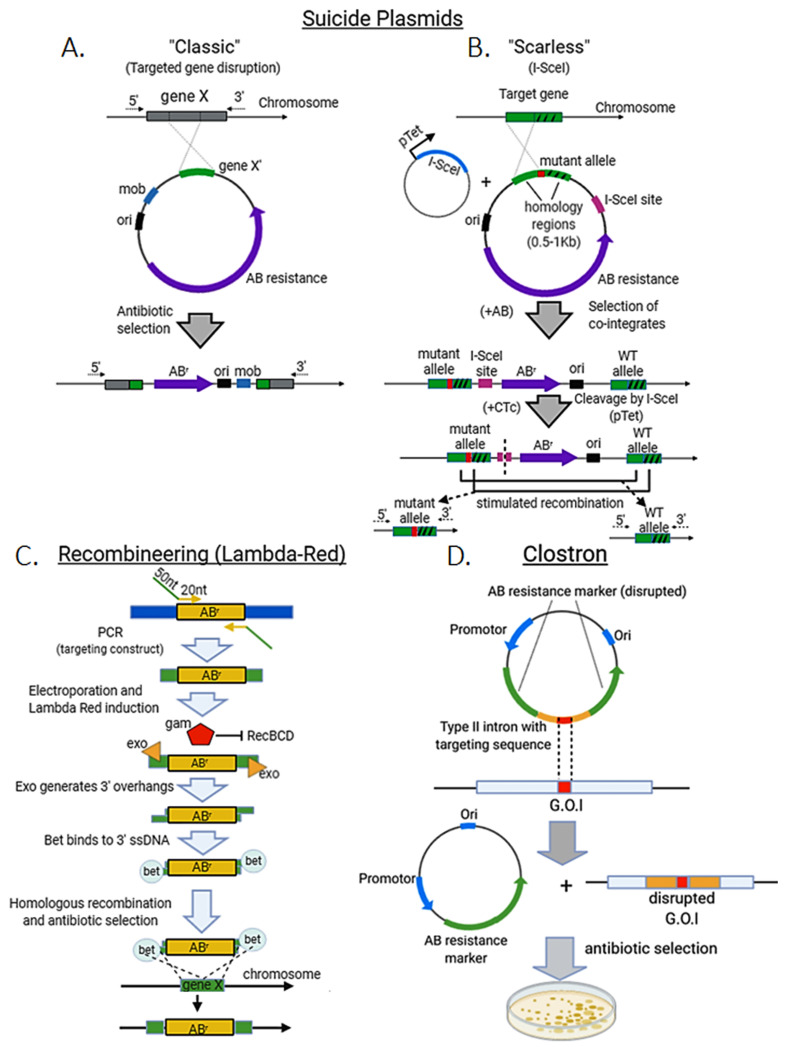Figure 2.
Standard methods for genome editing in bacteria. Suicide plasmids. (A) The classic approach consists in transforming with a non-replicating plasmid (usually with a transposon element, e.g., mob), which harbors a mutated recombination template and an antibiotic resistance marker (ABr). Antibiotic treatment will select only colonies that undergo homologous recombination to incorporate the plasmid sequence (including the mutant gene) at the target locus (disrupting gene X). (B) In the “scarless” variant a SceI site is incorporated in the plasmid to be transformed in a I-SceI expressing strain under an inducible promoter (pTet). After a first round of antibiotic treatment, cointegrating colonies harboring the plasmid sequence and the wild-type allele at the target gene locus are selected. Addition of chlortetracycline (CTc) induces I-SceI expression to cleave the target locus, which enhances homologous recombination to eliminate plasmid sequence resulting in either, reversion to wild-type or fixation of the mutant allele. (C) Recombineering (lambda red system) for targeted gene disruption. A targeting construct with 50 nt of homologous sequence at the 5′ and 3′ ends and antibiotic resistance marker is made by PCR. PCR template is electroporated and expression of the lambda Red proteins is induced (Ex. Heat shock at 42 °C). Gam inhibits RecBCD nuclease activity upon linear DNA (protecting the targeting construct). Exo generates 3′ overhangs in the DNA linear template, which are accessed by bet protein to facilitate homologous recombination and integration and disruption of the target gene (gene x). Edited colonies are then selected by antibiotic treatment. (D) ClosTron method. A type II intron with transposon activity is cloned within a disrupted antibiotic resistance cassette in a plasmid. After transformation, the intron, which has been modified with a specific, homologous sequence, targets the gene of interest (G.O.I) and disrupts it leaving behind a plasmid with a functional antibiotic resistance marker. Antibiotic selection then enhances and simplifies the obtention of mutant colonies.

